Aïssata Fall
Africa Director, Regional Representative for West and Central Africa

USAID Stawisha Pwani seeks to increase the use of quality, sustainable, and county-led health services and systems for communities living in Kenya's coastal counties of Kilifi, Mombasa, Kwale, and Taita Taveta.
Status: Current (2021-2026)
PEPFAR
USAID
LVCT Health
Africa Director, Regional Representative for West and Central Africa
Health Systems Strengthening Technical Officer
Program Officer
Health Systems Strengthening Technical Officer
Program Associate
Finance and Administration Officer
In Kenya, counties draw on an equitable share of revenue and conditional grants from the national government as well as their own revenue collections when crafting budgets. Yet, two programs that are critical to supporting a healthy population—HIV/AIDS and maternal and child health—have uncertain futures. These programs receive significant funding from donors. The USAID Stawisha Pwani project supports Kenyan counties in their efforts to raise revenue and allocate resources to develop, improve, and sustain county governments’ investments in HIV/AIDS and maternal and child health.
Funded by the President’s Emergency Plan for AIDS Relief (PEPFAR) through the United States Agency for International Development (USAID), Stawisha Pwani is a five-year project led by LVCT Health. As a key partner on the project, PRB supports four coastal counties by strengthening the financing and accountability of their county health systems.
PRB collaborates with county officials to understand their health budgeting constraints and needs, develop support for evidence-based decision-making, and foster dialogue between them and other key parties in the budgeting process.
For instance, we work closely with representatives from the county health department, treasury, and assembly in Kilifi, Kwale, Mombasa, and Taita Taveta to provide them with technical assistance on allocating resources for HIV/AIDS and maternal and child health services. This assistance includes using data to inform resource distribution and identify weaknesses in the health systems that need their attention. We bring these regional decisionmakers together with national health insurance fund (NIHF) managers at the regional level to advance communication and evidence-based health financing allocations. (The NIHF has been renamed to the social health authority, SHA.)
To enhance accountability and sustainability in health financing, we provide support on budget advocacy, negotiations, and tracking to representatives from the county Department of Health and CSOs. This assistance is targeted at focusing on using health data to inform decision-making in line with the county’s budget calendar.
Input from civil society organizations (CSOs) and youth advisory champions for health also plays a key role in county budgeting processes. We work with CSOs and youth from Kwale, Kilifi, Taita Taveta, and Mombasa, mentoring them on policy advocacy communications. This training provides them with tools, data, and skills to articulate health issues that affect their age groups and communities and help advance solutions in their discussions with policymakers. We also provide support to the media through training that builds their skills so they can focus public attention on critical health systems issues through their reporting.
Monitoring progress. In 2021 PRB conducted political economy and sociocultural baseline assessments that provided summaries of profiles on issues affecting county budgeting and financing for health in Kilifi, Kwale, Mombasa, and Taita Taveta counties. We initiated this baseline report to serve as the foundation for monitoring USAID Stawisha Pwani’s achievements and impact during the project’s lifecycle. The report’s scope focused on health laws and policies in the four counties, assessment of health funding levels, health financing indicators that the project will use to track progress, existing departmental structures like health sector working group and county and subcounty health management teams, challenges in health financing and budgeting, and the impact of COVID-19 on health budgeting. It provided a summary of recommendations on four broad areas—regulations and policies, budget tracking, capacity strengthening, and health care financing—that are guiding the project’s monitoring practices.
Capacity building and training. USAID Stawisha Pwani partners with the four county treasury departments to enhance health department staff’s capacity to apply a program-based approach to budgeting. This annual training aligns with the budget process and emphasizes the importance of transparent practices and collaboration between county and sub-county levels.
Project staff also facilitated training for 12 youth in Kwale County, focusing on sexual and reproductive health and budget advocacy. In addition, project staff supported the training of 40 journalists in print and digital media from the four counties. The journalists were trained in policy advocacy and health reporting and developed 22 draft pitch stories.
Two of these stories were published as of early 2024. Watch one of the stories on KTN News Kenya and read a story on Kenya Television Media News KMTN. Listen to a story a feature story on prevention of mother to child HIV transmission in Swahili from Radio Kaya.
We have created the momentum, and the trajectory is set for continuous improvement. In the short period, we have identified the challenges, gaps, and learnt the lessons that will help us improve revenue collection, expenditure, reporting, and eventual improvement in health service delivery.
— Elvis Mwandawiro, Taita Taveta County Director of Health during the launch of the operations and supervision manual

PRB is a partner on the PROPEL Health project, which is working to support more equitable and sustainable health services, supplies, and delivery systems through policy, financing, governance, and advocacy.
USAID, The Palladium Group
Senior Program Director
Media Technical Advisor
Technical Director, Demographic Research
Program Director
Senior Policy Advisor
PROPEL Health aims to improve the enabling environment for equitable and sustainable health services, supplies, and delivery systems through policy development and implementation; health financing; government stewardship, transparency, and accountability; and the use of evidence-based advocacy approaches at the global, national, and subnational levels. The project focuses on family planning/reproductive health (FP/RH) and the integration of FP/RH with HIV and maternal and child health (MCH).
To enhance resilience and sustainability, PROPEL Health prioritizes local solutions for policy, advocacy, financing, and governance leadership, technical assistance, and capacity development.
The project’s core team includes Palladium, African Economic Research Consortium (AERC), Avenir Health, Population Reference Bureau (PRB), RTI International, Samasha Medical Foundation, and White Ribbon Alliance (WRA). It is led by Palladium and funded by USAID.
We bring expertise in key areas, including:

Translating scientific research findings for non-scientific audiences, the U.S. Policy Communications Training Program builds on PRB’s 40-year legacy of training researchers to bridge the gap between research findings and the policy development process.
Eunice Kennedy Shriver National Institute of Child Health and Human Development
Technical Director, Demographic Research
Senior Program Director
Associate Vice President, U.S. Programs
While research often has profound practical implications, it must be communicated effectively to a variety of non-technical audiences to influence policy and programmatic change.
Current U.S. predoctoral graduate education is not designed to train researchers in how to communicate research results to nonacademic audiences. PRB addresses this gap with its U.S. Policy Communications Training Program.
The program prepares current Ph.D. students from U.S. academic institutions to influence policy and practice through effective communication. Participants learn to present findings on population and health topics in ways that are understandable and accessible to policy audiences, including decisionmakers, advocates, and the media. They will understand how research informs the policy environment, learn ways to communicate findings to U.S. and international policy audiences, and improve their ability to communicate in written and verbal formats.
The program’s main goal is to expand the cadre of U.S. population research professionals committed to policy communication. Its objectives are to: (1) address barriers that researchers face in communicating population-related research results to policy audiences; (2) engage a diverse group of predoctoral students (future population professionals) in policy communication over their careers; and (3) teach population scientists about the process by which research informs the policy environment, how to identify and communicate the policy implications of their research, and various tools/skills for communicating findings to U.S. policy audiences.
The U.S. Policy Communications Training Program consists of two components.
PRB has trained nearly 100 Ph.D. students enrolled in reputable U.S. academic institutions and conducting research on population and health topics to communicate with U.S. policy audiences, including government decisionmakers, advocates, and the media, since 2015.
The 2023 training program awards were announced in April 2023. The announcement for future training programs will be made on the PRB website.
Applicants submitted the following to PRB:
If you are still enrolled in your Ph.D. program, you are still eligible to apply to the Policy Fellows program. During the selection process, we tend to give preference to those students who will remain enrolled in their academic programs through at least the following spring/summer. Please be sure to note your anticipated graduation date as requested on the application form.
We are limited to accepting participants whose research focus is related to demography, reproductive health, or population health.
PRB’s funding for this program is made possible by the U.S. Department of Health and Human Services—National Institutes of Health (NIH), Eunice Kennedy Shriver Institute of Child Health and Human Development (NICHD). As such, we are only able to support students who are U.S. citizens or Green Card holders (permanent residents). PRB does offer a separate Policy Communications Training for international students under our PACE Project, funded through the USAID Office of Population and Reproductive Health. This training supports students who are from USAID family-planning priority countries.
Unfortunately, at this time only students who are enrolled in Ph.D., Dr.PH., or other doctoral programs are eligible for this fellowship.
The Policy Fellows program is designed for students who are currently pursuing a Ph.D. or other doctoral level degree. If you are not currently enrolled as a student in a Ph.D. or doctoral program, you are not eligible to participate.
PRB will arrange and pay for participant to travel to the workshop, which includes flights, hotel accommodations, and a travel stipend for additional expenses. During the workshop, participants will stay at a comfortable hotel very near PRB’s office in the Dupont Circle neighborhood of Washington, D.C.

PRB is a partner on the Palladium-led, USAID-funded Health Policy Plus (HP+) project that strengthens and advances health policy priorities at global, national, and subnational levels.
USAID, Palladium
Former Program Director
Media Technical Advisor
Former Associate Vice President
HP+ focuses on strengthening and advancing health policy priorities in family planning and reproductive health, HIV/AIDS, and maternal and newborn health at global, national, and subnational levels, expanding the efforts of prior U.S. Agency for International Development (USAID) investments from the Health Policy Project (HPP).
HP+ works in more than 17 countries and aims to improve the enabling environment for equitable and sustainable health services, supplies, and delivery systems through policy development and implementation, with an emphasis on voluntary health programs, and by strengthening in-country partners’ capacity to navigate complex environments for effective policy design, implementation, and financing. Taken together, evidence-based inclusive policies, more sustainable health financing, improved governance, and stronger global leadership and advocacy will lead to improved health outcomes worldwide.
HP+ is funded by USAID and the U.S. President’s Emergency Plan for AIDS Relief (PEPFAR). It is implemented by a multidimensional, complementary team led by Palladium.
PRB brings our core strengths in communicating technical health information to the project. Specifically, we work to:
After training from HP+, youth reporters and radio listening club members produced weekly radio programs about youth reproductive health topics in several districts across Malawi. In one example, in 2020 a program on Nkhotakota Radio urged pregnant teenagers to get an HIV test to reduce the risk of transmitting the virus to their babies. Within two weeks of the program airing, an additional 40 pregnant teenagers had visited the District Health Office for HIV tests. Since receiving their training, some youth participants have led youth organizations that lobby local and regional leaders on issues important to youth, including health and education.
In 2018, HP+ conducted policy and advocacy training in Malawi to amplify the voices of young adults working on issues related to youth-friendly health services. A short video presents the voices of three youth champions (also featured in the HP+ 2019 World Population Day blog) who attended the training and are continuing to work in various ways to inspire and educate youth in their communities.
Although Mali has ratified most major international and regional human rights treaties, and its constitution defends women’s rights, the country has yet to formally pass a law criminalizing gender-based violence (GBV). HP+ worked with Mali’s Ministry for the Promotion of Women, Children, and Families and its National Control Program Against Excision to develop advocacy tools, including infographics, for key decisionmakers and the media to spur political will to pass the GBV law. The advocacy materials (in French) include key data and information on GBV, child marriage, and female genital cutting in Mali. They also provide actions that policymakers and the media can take to advocate for a stronger legal and regulatory environment to support voluntary, equitable, rights-based programs.
In Malawi, strategic and multisectoral investments in youth are critical pieces of national growth and development. Growing Together: Multisectoral Investments in Malawi’s Youth is an ENGAGE™ multimedia presentation that describes the necessary investments in young people’s health, education, employment opportunities, and participation in governance that can create a window of opportunity for accelerated economic development. The presentation’s goal is to build awareness of the overlapping needs and priorities of multiple sectors and increase support for cross-sectoral investments in Malawi’s young people. To achieve this goal, the presentation is designed to boost individuals’ understanding of the links between and among young peoples’ health, education, employment, and meaningful participation in governance, and how investments in each of these sectors can contribute to Malawi’s growth and development. The ENGAGE is available in English and Chichewa.

The SAFE ENGAGE project supports safe abortion access by providing decisionmakers with the latest data on abortion, strengthening the capacity of advocates to achieve policy goals, and working with journalists to improve evidence-based reporting.
Senior Program Director
Media Technical Advisor
Africa Director, Regional Representative for West and Central Africa
Thousands of women in sub-Saharan Africa die each year from pregnancy-related causes. Unsafe abortions account for one in seven maternal deaths in Africa, and more than 1.5 million women are treated each year for complications from unsafe abortion. Young African women are especially affected: More than half of unsafe abortions in the region are among women under age 25. Reducing deaths from unsafe abortion requires a policy environment that supports women to equitably access comprehensive prevention and treatment services—contraception, safe abortion, and postabortion care.
The four-year SAFE ENGAGE project is implemented in countries across sub-Saharan Africa, including Burkina Faso, Côte d’Ivoire, the Democratic Republic of Congo, Lagos state in Nigeria, and Zimbabwe. SAFE ENGAGE also contains a rapid response mechanism through which other national and regional partners can request creative, data-driven communications materials to support specific advocacy objectives.
SAFE ENGAGE
SAFE ENGAGE established four country-level task forces that brought together demographers, economists, medical professionals, women’s health and rights proponents, policymakers from government ministries, and parliamentarians for discussions about abortion. These task forces created spaces for collaboration and information sharing that broadened dialogue to include new perspectives, created consensus around objectives and messages, and renewed a focus on evidence. Each task force produced and disseminated ENGAGE multimedia presentation packages. This process strengthened the capacity of task force members to use data and messaging effectively in their own presentations and materials, strengthened collaboration and consensus among safe abortion champions, and generated important policy conversations that are continuing today.
SAFE ENGAGE also supported an intensive media training effort to equip a cadre of journalists in each country to accurately report on the policies and laws surrounding abortion and the determinants, incidence, and consequences of unsafe abortion. Each country setting required its own context-specific focus, and this tailored approach has reaped the reward of high-quality reporting across diverse news outlets.
During the second phase of the project, SAFE ENGAGE built on the work of the task forces by conducting policy communication training and regional learning exchanges to strengthen Task Force members’ ability to communicate with policy audiences and foster collaboration across neighboring countries. The regional learning exchanges also allowed participants to learn from each other’s successes and brainstorm approaches to overcoming shared challenges. SAFE ENGAGE also produced a guide to policy dialogue for safe abortion, which synthesized learning from the first phase of the project.

In partnership with the Annie E. Casey Foundation, PRB provides training to the KIDS COUNT Network and helps child advocates stay informed about relevant data and how to best communicate it.
Annie E. Casey Foundation
Program Director
Senior Research Associate
Associate Vice President, U.S. Programs
Former Senior Demographer
Senior Fellow
More data and ways of communicating information are available than ever before. KIDS COUNT Network members do not always have the resources available to stay informed about existing and new datasets or about best practices regarding data analysis and data communication.
PRB supports the work of the KIDS COUNT Network by providing high-quality training and technical assistance to state-level child advocates. Our work helps build Network members’ analytic capabilities, which they can apply to work on children’s issues more effectively in their states.
For more than 15 years, PRB has provided the KIDS COUNT Network with data workshops, webinars, videos, and how-to guides to help members stay informed about existing and new datasets, learn important information and caveats regarding data, share best practices for using data and communicating information clearly, and learn from one another.
Our work helps build Network members’ analytic capabilities, which they can apply to work on children’s issues in their states.
PRB’s technical assistance and training have helped to build Network members’ abilities to fully utilize datasets, analytic techniques, and communication practices to support their work on children’s issues. Network members have been able to respond to changing data and analytic needs by expanding their use of data disaggregated by race and ethnicity or by smaller geographic levels, increasing the use of data visualization and improving their data management strategies.
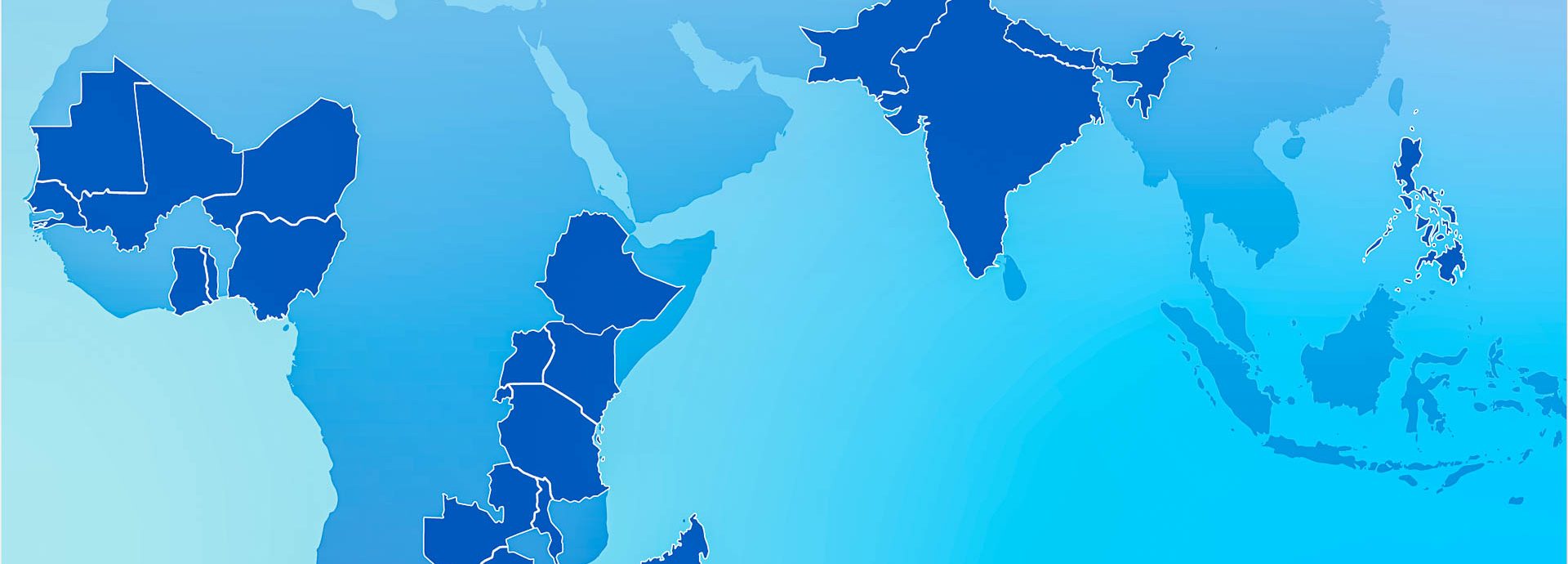
PACE and our local partners build champions, bridge sectors, and distill evidence to ensure that family planning, reproductive health, and population issues are recognized as key to sustainable and equitable economic growth and development.
USAID
Former Associate Vice President
Program Director
Africa Director, Regional Representative for West and Central Africa
Former Country Director, Kenya
Program Finance & Operations Manager
Adaptive Learning and Knowledge Management | Data Visualization and Dissemination | Demographic Estimation and Forecasting
| Distilling Research for Non-Technical Audiences | Research and Data Analysis | Policy and Advocacy Communications Training | Technical Assistance and Training | Training and Support for Journalists
Over the last two decades, many countries have realized remarkable increases in the use of modern contraception. More women and couples are using effective methods to choose when and how many children to have—benefiting their health, their children’s health, and their families’ economic prospects. However, this progress varies regionally and within countries, and demand for voluntary family planning is not fully satisfied in many USAID priority countries. To meet this need, development partners and national advocates are mobilizing to ensure that governments honor the policy, financial, and other commitments made through the Sustainable Development Goals (SDGs), Family Planning 2020 partnership, and other initiatives.
Funded by the United States Agency for International Development (USAID), the PACE Project—Policy, Advocacy, and Communication Enhanced for Reproductive Health—ensures these commitments are met at the global, national, and decentralized levels by strengthening capacities in advocacy, policy communication, and negotiation; building bridges between sectors with integrated approaches such as population, health, and environment and efforts to amplify understanding of the benefits of age-structure change across development sectors; and analyzing, distilling, and disseminating evidence and data to engage policy and advocacy audiences to act. PACE integrates the cross-cutting themes of gender, youth, and equity throughout all activities.
PACE activities ensure that family planning, reproductive health, and population issues are at the heart of policies and programs and are recognized as key to sustainable and equitable economic growth and development. Through PACE, PRB can help countries achieve Family Planning 2020 commitments, end preventable child and maternal deaths, and reach the SDGs.
Since the project’s launch in 2015, PACE has advanced political and financial commitments for family planning and reproductive health across 20 countries. In 2020, the project was extended so we can continue to:
PACE’s intensive capacity strengthening positions partners and individuals, including new cadres of champions, to implement and advocate for multisectoral development solutions that make tangible contributions to countries’ Journey to Self-Reliance (J2SR). Our approach adapts to our partners and is premised on sustainable engagement driven by their needs. We are an active part of the communities we serve, listening and working together.
Across several multisectoral approaches to development—including population, environment, and development (PED); gender; and the demographic dividend—PACE plays a critical role by providing technical expertise; identifying, training, and convening champions; and developing and disseminating cutting-edge knowledge.
PACE generates innovative approaches to analyze, synthesize, and communicate data and information to decisionmakers. PACE co-creates tools and products and applies fresh dissemination approaches in collaboration with local partners, and leads efforts to increase the use and application of data for policymaking.
PRB’s East Africa office, based in Nairobi, oversees PACE’s largest country program in Kenya, a multipronged effort supporting partners across sectors and geographies to create an enabling environment for prioritizing family planning and reproductive health and contribute to implementation of the J2SR.
For family planning advocates, no greater success exists than a dedicated and adequately funded line item in the health budget. PACE’s strategic approach to budget advocacy has paid off in Samburu County, Kenya, where concerted advocacy activities led to a first-ever budget line item for family planning, as well as an increased percentage of the county’s budget allocated to health in FY 2020/21. Over a period of months, PACE facilitated workshops to support the county health management team (CHMT), sector working groups, and departmental representatives to identify priorities for county budgeting. This continuous engagement with the CHMT has enabled them to effectively advocate to the Finance Department and County Assembly for increased funding for health and a new budget line valued at approximately $112,000 for family planning.
Nigerian youth advocates trained by PACE secured policy commitments from local leaders by creating videos focused on ending child marriage and increasing access to family planning services. BCAI, a youth-led organization launched with support from PACE, aided local youth advocates to widely disseminate the videos across popular social media platforms and in community-level policy dialogues with seven influential leaders from both the traditional and political governing structures in northern Nigeria. Following their outreach, the governor of Kano State made a public declaration to end child marriage by committing his support to the Child Protection Bill. While the legislation is still pending, sections of the bill that provide for compulsory schooling for all children as a method to reduce child marriage have been adopted into a state-level policy.
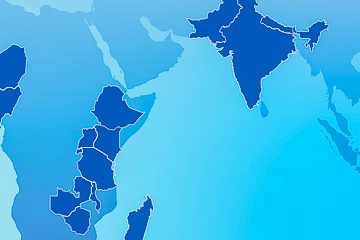
Under PACE, PRB works closely with global actors, national and local governments, USAID missions, and civil society to build champions, bridge sectors, and distill evidence through data-driven, innovative products. PACE strengthens capacities in advocacy, policy communication, and negotiation, and increases commitments to multisectoral approaches such as Population, Health, and Environment and the demographic dividend.

PACE produces original analysis and targeted communication materials to examine variations in adolescent fertility throughout Nepal. Together with local partners, PACE works to ensure that Nepal’s policies and programs use this new information on adolescent fertility to strengthen family planning programs and keep girls in school as the country promotes sustainable, equitable economic growth and development.
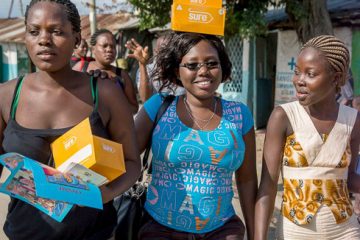
In Kenya, PACE works with national and subnational partners to ensure that sustained access to quality family planning and reproductive, maternal, newborn, child, and adolescent health is enshrined in Kenya’s policies and programs to achieve the Sustainable Development Goals and Kenya’s Vision 2030. PACE is recognized as a key partner supporting Kenya’s Journey to Self-Reliance.

The Sahel Faith ENGAGE initiative supports policy dialogue about faith and family planning in three countries—Guinea, Mali, and Mauritania—working with a task force of religious leaders, youth, and government representatives contributing to an enabling environment for policies and programs supportive of reproductive health in the Sahel.
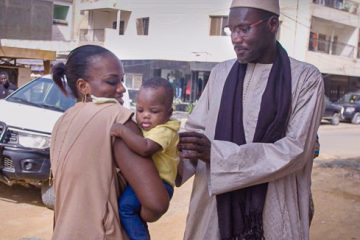
In Senegal, PACE supports religious leaders who are working to increase knowledge among their communities about the benefits of family planning, and continues to build the capacity of the media on the multiple benefits of family planning and maternal and child health services.
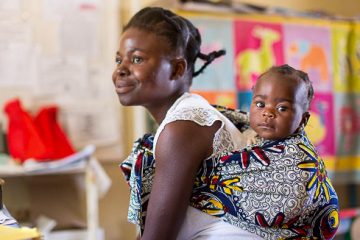
In Zambia, PACE implements innovative, strategic approaches to ensure that HIV/AIDS, population, and family planning are included in Zambia’s policies and programs as key to sustainable and equitable economic growth and development.
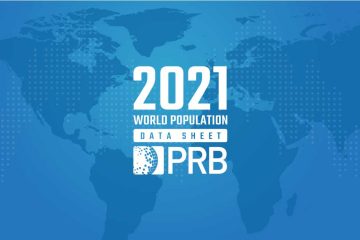
The 2021 World Population Data Sheet offers the latest population, health, and environment indicators for more than 200 countries and territories, each carefully researched by PRB’s expert team of demographers and analysts.
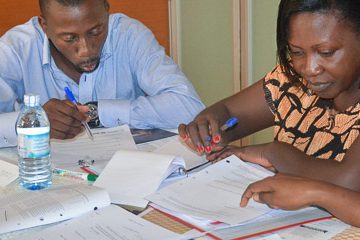
This toolkit bridges the gap that often lies between research and policy. It consolidates tools, materials, and approaches PRB has developed and refined over 30 years of training researchers to communicate with policy audiences.

Women’s decisions about family planning are complex and change over time. Understanding these shifts can help us meet women’s needs and support their goals.

In Ghana and Uganda, young people dominate the population age structure below age 15. Both countries can shift this high child dependency by empowering women to achieve their reproductive goals.

Supporting targeted local planning in the context of Nepal’s recently devolved governance, the PACE Project has released modeled estimates of adolescent fertility for the 753 municipalities in Nepal.

Yet even as governments refine their development plans and priorities, they are contending with the massive disruption caused by the coronavirus pandemic.

The Evidence Project uses implementation science—the strategic generation, translation, and use of evidence—to improve family planning policies, programs, and practices. Led by the Population Council, the five-year project (2013–2018)investigated which strategies work best in improving, expanding, and sustaining family planning services.
Population Council
The Evidence Project uses implementation science—the strategic generation, translation, and use of evidence—to improve family planning policies, programs, and practices. Led by the Population Council, the five-year project (2013–2018) is investigating which strategies work best in improving, expanding, and sustaining family planning services. It is also evaluating how to implement and scale up those strategies. Critical to the Evidence Project is translating this knowledge and working with stakeholders to apply the evidence and to build capacity in using implementation science to improve policies, programs, and practices.
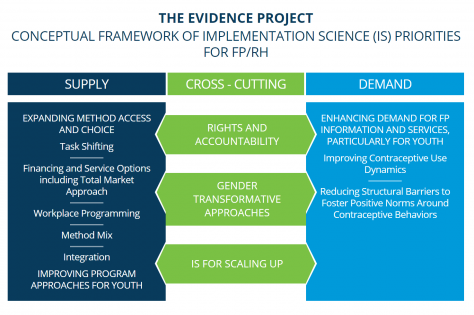
Through implementation science, the Evidence Project pinpoints how family planning and reproductive health services can operate more effectively, equitably, and at scale. The project is focused on several implementation science technical priorities and activities organized around key supply and demand factors that affect access to and use of family planning and reproductive health services. It also focuses on three cross-cutting principles: rights and accountability, gender equality, and implementation science for scale up. Through this work, the Evidence Project is helping to reduce unmet need and unintended pregnancies around the world.
The Evidence Project is leading the discussion on:
Access the latest Evidence Project publications on the Population Council website.

Investment in effective policy and program interventions for youth family planning (FP) improves the use of data and evidence for FP advocacy.
Bill & Melinda Gates Foundation
Empowering Evidence-Driven Advocacy (EEDA) was a four-and-a-half year project (2017-2021) implemented by PRB and the...
Bill & Melinda Gates Foundation
PRB is implementing a project, Bridging High Impact Family Planning Communications and Advocacy, in partnership with the Bill & Melinda Gates Foundation. The goals of this project, which began in May 2016, are to facilitate investment in effective policy and program interventions for youth family planning (FP) and to improve the use of data and evidence for FP advocacy.
The project has two components:
PRB’s Youth Family Planning Policy, released in April 2017, measures the favorability of national policy and program environments for youth uptake of contraception. It reviews countries’ commitments across six indicators that have been proven to affect access to and use of contraception among youth ages 15 to 24. The current version of the scorecard includes data for sixteen countries: Benin, Burkina Faso, Côte d’Ivoire, Democratic Republic of the Congo, Ethiopia, Guinea, Kenya, Mali, Mauritania, Niger, Nigeria, Senegal, Sindh (Pakistan), Tanzania, Togo, and Uganda.
The goal of the scorecard is to increase understanding about what makes a policy environment favorable to youth and adolescent uptake of contraception and what barriers young people face to accessing services, thus providing governments, donors, and civil society with greater knowledge of where to invest their resources.
PRB’s “Youth Contraceptive Use: Effective Interventions, Reference Guide” compiles existing evidence of policy and program interventions that have proven to be effective in increasing access to and use of contraception among youth, as well as those that are promising but have inconclusive evidence and those shown to be ineffective.
The Resource Hub provides support to FP advocacy partners to develop evidence-based advocacy materials and strategies. PRB is developing customized products that enhance advocates’ abilities to analyze, interpret, and communicate data and evidence to educate local decisionmakers of the benefits of FP. The Resource Hub currently supports two advocacy initiatives.
PRB collaborated with the Advance Family Planning team in Tanzania to develop a package of materials highlighting new survey results on adolescent pregnancy and youth FP. The three regional infographics, short multimedia video, policy brief, and media guide connect investments in youth to broader national development and outline actions that policymakers can take to meet young people’s FP needs. These materials will support partners’ ongoing advocacy at national and subnational levels.
In India, PRB collaborated with AFP and Pathfinder International to develop a multimedia video outlining how family planning shapes women’s empowerment and community well-being. The video can be used as a tool for corporate social responsibility (CSR) managers to advocate for corporate boards to allocate funds towards FP programs in nearby communities. An accompanying fact sheet further details how investing in family planning can spur India’s economy, catalyze the workforce, and improve health outcomes of women and children in India.
In West Africa, PRB has partnered with the Ouagadougou Partnership (OP) Coordination Unit and its Youth Ambassadors (YAs), who are enthusiastic and dynamic champions for youth access to FP. PRB and the YAs held a cocreation workshop to plan two compelling advocacy tools for the YAs to launch at the 2016 OP Annual Meeting and later customize and adapt in individual countries. A short introductory video outlines youth FP needs in the region and the need for urgent attention. A multimedia presentation highlights barriers in youth access to contraception, the tangible benefits of overcoming those barriers, and youth-focused recommendations for action.

Enhancing research and policy communication in population, reproductive health, and economic development.
William and Flora Hewlett Foundation
As part of the William and Flora Hewlett Foundation’s Population and Poverty (PopPov) Research Initiative to enhance research and policy communication in population, reproductive health, and economic development, the foundation has partnered with Population Reference Bureau (PRB) and other institutions in the United States, the United Kingdom, Norway, the Netherlands, France, and Africa to strengthen evidence on how population and reproductive health affect economic outcomes in low- and middle-income countries. Under this initiative, Hewlett partners have awarded research funding to more than 100 principal investigators and Ph.D. candidates.
To date, Network researchers have addressed research questions relevant to social, health, and economic issues in 70 countries. Their work, which includes over 250 publications, has shed light on pathways through which fertility, health, and population growth affect economic growth at the national level. Other work has provided insight on the relationships between reproductive health, fertility, education, women’s labor force participation, and economic growth.
The PopPov body of research shows that in order for a country to build a strong and growing economy and end poverty among its families, leaders must invest in policies and programs that support expanded access to comprehensive reproductive health services alongside investments in education. These investments can yield a healthy and educated population and a productive economy.
The research findings provide insight and an evidence base that is particularly relevant to achieving the Sustainable Development Goals (SDGs). Specifically, findings show that investing in women’s health, education, and empowerment improves economic well-being for individuals and households, and contributes to economic growth. This body of evidence can inform policy solutions to global challenges including poverty, health, women’s empowerment, and sustainable economic growth.
For other publications and resources from the Network, visit www.poppov.org.
For more information, contact Marlene Lee, senior program director, Academic Research and Relations, 202-483-1100.
